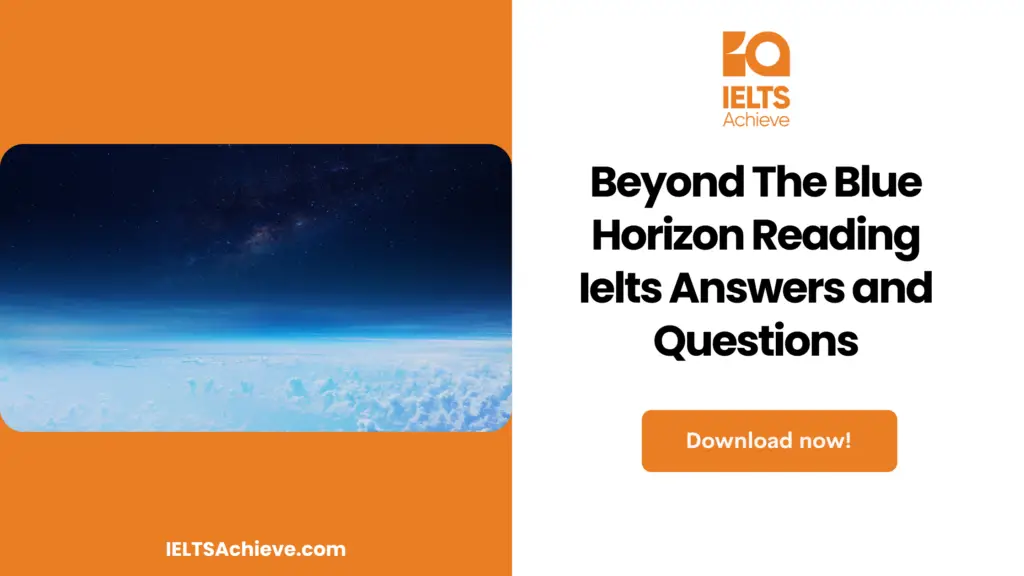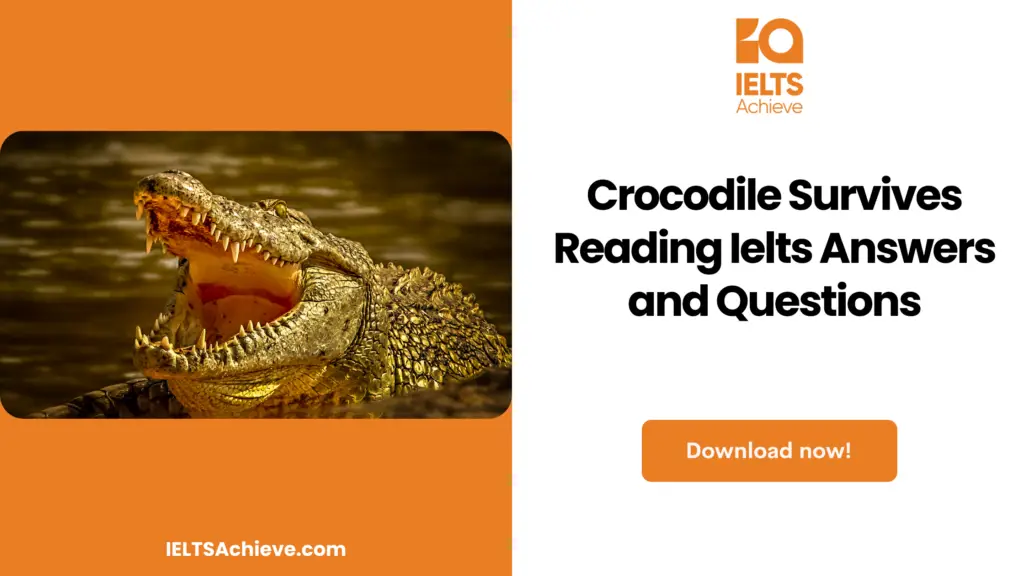The Blog post contains the following IELTS Reading Questions:
- IELTS reading Summary completion
- IELTS reading Sentence completion
- IELTS reading Matching information
Stay informed and prepared for success – Explore our comprehensive Reading Test Info page to get valuable insights, exam format details, and expert tips for mastering the IELTS Reading section.
IELTS Reading Passage – Beyond the Blue Horizon

Beyond the Blue Horizon
Traces of ancient seafaring people are discovered by archaeologists on the island of Efate in the Pacific archipelago of Vanuatu. It is the distant ancestors of today’s Polynesians. Accidentally, the site came into the light. An agricultural worker opened a grave while digging the grounds of a derelict plantation, where they found the first dozens in a burial ground about 3,000 years old. In the Pacific Islands, it is the oldest cemetery and it holds the ancient people’s remains which archaeologists referred to as the Lapita.
They were courageous blue-water adventurers who used basic canoes to drift across the ocean. More than an explorer, they pioneered the act of carrying everything with them to build new lives, like their livestock, taro seedlings and stone tools. The Lapita expanded their boundaries of the world from the jungle-clad volcanoes of Papua New Guinea to the loneliest coral outliers of Tonga, within a period of several centuries.
The Lapita leaves several important clues about themselves, while Efate expands the collection of data made available largely to the researchers. Until now, 62 individuals’ remains have been identified and also archaeologists found six complete Lapita pots which thrilled them. They have also found other items including, Lapita burial urn arranged on the rim. Matthew Spriggs, a professor of archaeology at the Australian National University, says “It’s an important discovery”. And, the Head of the international team digs up the site, ‘for it conclusively identifies the remains as Lapita.’
We can come to the conclusions to the most puzzling problems in Pacific anthropology, like whether the Pacific Islanders came from the same source or multiple sources, with DNA extracted from the human remains. Spriggs says in the following way, ‘This represents the best opportunity we’ve had yet to find out who the Lapita actually were, where they came from, and who their closest descendants are today.’
One serious question that archaeologists still need to provide answers to is how Lapita was able to achieve the ancient equivalent of a moon landing, many times over ? No canoes or rigging had been found which reveals how the canoes were sailed. Not even the oral histories and traditions of later Polynesians offer any insights about Lapita which are likely to be far back before the myths were created.
Geoff Irwin, a professor of archaeology at the University of Auckland, says “All we can say for certain is that the Lapita had canoes that were capable of ocean voyages, and they had the ability to sail them”. He says that sailing skills are transferred from the earlier mariners who worked their way through the archipelago of the western Pacific, making a short cross to nearby islands, to the people of Lapita. The real adventure didn’t start, till the Lapita descendants who sailed beyond the sight of the land. It must be as difficult for moon landings as for us today. This made them unique among their ancestors. Where have they got the courage to undertake such risky voyages ?
Irwin notes that Lapita was plunged into the Pacific eastward, against the trade winds. He argues, those nagging headwinds could be their key to success. They might have sailed out for days into unknown range to analyze the area; they could have returned if they didn’t find anything. This is how the whole thing works. When they were there, skilled seafarers could have found the abundance which leads them to land: seabirds, coconuts and twigs brought to the sea by tides, and the clouds pile on the horizon in the afternoon which often denotes the distant island.
The geography of the archipelagoes provided returning explorers a safety net. Going beyond the home ports, getting lost and sailing off into eternity becomes so easy if they don’t have their safety net to go by. For example, the size of Vanuatu is more than 500 miles in a northwest-southeast trend, and intervisible islands’ scores act as a backstop for mariners riding the trade winds home.
Athol Anderson, a professor of prehistory at the Australian National University notes that this followed by one essential detail, which is Lapita had mastered the advanced skill of sailing against the wind. Anderson said that there is no proof they could do any such thing. They might recreate the canoes based on the early voyages. But no one knows any idea either what their canoes looked like or how they were rigged.
Anderson gives the credits to the chance instead of giving it all to the human skill. Anderson suggests that El Nino, a climate disruption that badly influenced the Pacific Ocean, might have scattered the Lapita. The climate data gained from slow-growing corals suggests that a series of unusual El Nino events happened during the Lapita expansion. El Ninos interrupted the Lapita when they were on long unplanned voyages by reversing the regular flow of east-to-west trade winds for weeks at a time.
The Lapita occupied about a third of the way across the Pacific, then they quit for reasons that are known only to them. They might have stretched too thinly to venture farther into the emptiness of the central pacific. Their population could not be more than a few thousands and they encountered 100s of islands (more than 300 in Fiji alone) as they rapidly migrated in an eastward direction.
Unlock your full potential in the IELTS Reading section – Visit our IELTS Reading Practice Question Answer page now!
Recommended Questions:
Renewable Energy IELTS Reading Question with Answer
Beyond the Blue Horizon IELTS reading questions
Questions 1 – 6
This reading passage has eleven paragraphs, A–K. Which paragraph contains the following information? Write the correct letter, A-K, as your answer to each question.
- How lapita sailed with canoes is not known
- Mention of sailing skills is passed from earlier mariners to lapita
- The archipelagoes’ geography is a safety net for lapita
- A series of El Ninos may scatter the Lapita during their expansion
- DNA from human remains helps to solve the problems in Pacific Anthropology
- Lapita people are pioneers of carrying everything necessary to build their lives.
Master the art of matching information and boost your score in the IELTS Reading section. Click here to access our step-by-step guide on handling Matching Information questions effectively.
Questions 7 – 10
Complete the summary below.
Choose NO MORE THAN TWO WORDS AND/OR A NUMBER from the passage for each answer.
The human remains of distant ancestors of today’s 7_______ are discovered by the archaeologists on the island of 8_____ in the Pacific archipelago of Vanuatu. They used 9_____ to go across the ocean. The boundaries of lapita’s world from jungle-clad volcanoes of Papua New Guinea to the loneliest coral outliers of 10_______.
Boost your performance in Summary, Notes, Table, and Flowchart Completion tasks. Click here to explore our detailed guide and learn how to effectively complete summaries, notes, tables, and flowcharts in the IELTS Reading section.
Questions 11 – 13
Complete the notes below.
Write NO MORE THAN TWO WORDS AND/ OR A NUMBER from the passage for each answer.
Findings on Lapita
- An 11_____ worker found the first dozens in the burial ground while they were digging the derelict plantation’s grounds.
- Archaeologists had found 12_____ complete Lapita pots.
- Another item they have found is Lapita burial urn arranged on the 13____.
Boost your performance in Summary, Notes, Table, and Flowchart Completion tasks. Click here to explore our detailed guide and learn how to effectively complete summaries, notes, tables, and flowcharts in the IELTS Reading section.
Unlock your full potential in the IELTS Reading section – Visit our IELTS Reading Practice Question Answer page now!
Recommended Questions:
Renewable Energy IELTS Reading Question with Answer
Beyond the Blue Horizon IELTS reading answers
1. Paragraph E
2. Paragraph F
3. Paragraph H
4. Paragraph J
5. Paragraph D
6. Paragraph B
7. Polynesians
8. Efate
9. Basic canoes/ canoes
10. Tonga
11. Agricultural
12. Six
13. Rim

We hope you found this post useful in helping you to study for the IELTS Test. If you have any questions please let us know in the comments below or on the Facebook page.
The best way to keep up to date with posts like this is to like us on Facebook, then follow us on Instagram and Pinterest. If you need help preparing for the IELTS Test, join the IELTS Achieve Academy and see how we can assist you to achieve your desired band score. We offer an essay correction service, mock exams and online courses.

